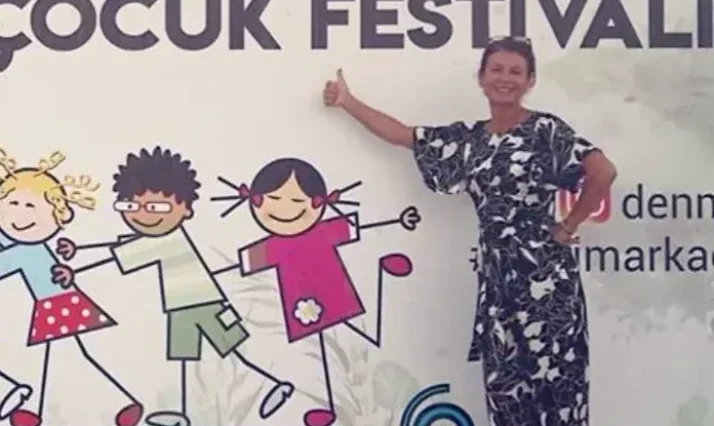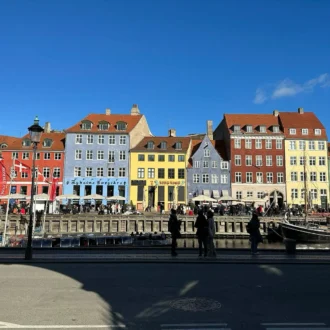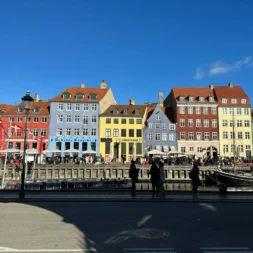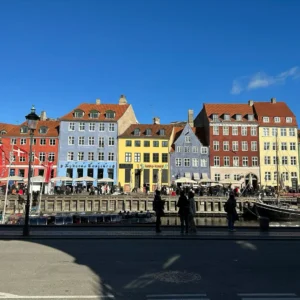The Cultural Bridge from Scandinavia to Anatolia – or the Danish Cultural Institute




This article was originally published by Ahmet Akkoç in ‘Danimarka’da Geçen Hafta‘ (Last Week in Denmark)
There’s French culture, American culture. So isn’t there also Danish culture? If you haven’t heard of it yet, there actually is a Danish Cultural Institute. So we thought: Let’s do a good interview so readers of Last Week in Denmark can get to know Danish culture better.
Ahmet Akkoç (AA): Can you tell us a bit about yourselves? What is your current role in Danish culture? What has been the most fun project you’ve worked on recently?
Irem Sumru (IS): My name is Irem and I work as a project manager at the Danish Cultural Institute. I’m currently living in Istanbul, but I lived in Berlin last year.
Füsun Eriksen (FE): My name is Füsun. I’ve worked at the Danish Cultural Institute for seven years, and for the past five and a half years I’ve been the Country Director for the Danish Cultural Institute in Turkiye.
IS: When you first contacted us for this interview, Ms. Füsun and I were actually in Ankara for two days. We were there to meet the new Danish ambassador in Ankara, Ole Toft.
AA: Since Mert was also in Ankara, we tried to catch you there, but I guess it wasn’t possible due to how busy things were. So thank you for being willing to join this interview on Teams.
AA: What’s the story of your organization, what is the history of the Danish Cultural Institute?
FE: The Danish Cultural Institute was founded in the 1940s. The aim of our organization is humanitarian: we want to establish cultural and artistic connections between different countries for the sake of peace. Therefore, our projects are of course developed in accordance with Danish values. We work toward an inclusive, open-minded, equal, and open society with a strong connection to nature.
I think our areas of activity shift over the years. We move based on where the need is. Currently, besides Turkiye, we’re also active in China, the Baltic countries, Ukraine-Belarus-Moldova in Eastern Europe, the Caucasus, India, Brazil, and more.
On one hand, we’re aware that the Danish Cultural Institute is a smaller player among similar organizations. We are not the Goethe Institute or the British Council, which are much larger. So the Danish Cultural Institute has physical institutes in some countries. In others, like Turkiye, we work like nomads, moving from project to project around the country.
On the other hand, even though we’re a small organization, we ensure that our projects are substantial in impact and efficient in cost. We try to include different cultures and faiths in our work. We are a humanitarian and peaceful organization, and we want to reach people, especially in these critical times.
AA: So what are the main goals of the Danish Cultural Institute in Denmark and in Turkiye?
FE: Our main target groups in Turkiye are children, youth, women, and civil society. While most of our projects are in Istanbul, we’re also working to reach the rest of Anatolia. In recent years, we’ve been in Çanakkale, Assos, Hatay, Kahramanmaraş. In 2025, we want to organize events in Mardin and the Black Sea region.
I think our activities outside Denmark are much more concentrated. Let me put it this way: to implement a project between two countries, support from both is necessary. A large part of our work involves sending Danish artists to countries like Turkiye. The budget we get from Turkiye is usually local, depending on the needs of the municipality or NGO, while the funding from Denmark covers the travel expenses of Danish artists. Through our current activities, we introduce Danish culture, works, and artists to Turkiye. When the artists return to Denmark, there’s a return on experience, which we believe is beneficial for Denmark.
Of course, it would be much better if this cultural exchange were mutual. We see the lack of this as a result of economic limitations. The available Danish funds want activities to happen in Denmark, and it’s difficult to find Turkish funding for projects in Denmark. As mentioned, our goal is to reach people, so we try to support the Turkish diaspora and artists in Denmark as much as we can despite these challenges.
Our role in Denmark is more advisory. Kerem Soyyılmaz, a director, music and event producer based in Copenhagen, is someone we are proud to work with. We also try to organize events with active authors in Denmark and Turkiye. For instance, this year’s CPH:DOX had a large Turkish audience thanks to Michael Thouber, the former director of Charlottenburg, and the artists he brought along. Attitudes toward Turks and Turkish art in Denmark are starting to shift.
AA: I understand. Thanks a lot. Even though I’ve lived in Copenhagen for years, I only recently became aware of the Danish Cultural Institute. Whenever I heard your name mentioned, it was always indirectly.
How can international residents in Denmark participate in the Danish Cultural Institute’s projects? Or what kinds of projects do you have to support the cultural integration process for internationals living in Denmark?
FE: The heart wants to do much more. Irem and my team continue to do as much as our resources allow. We have a small cultural development fund for Turkish culture, and we support various projects with it.
For example, director Kerem Soyyılmaz came to Denmark six years ago, and look at what he’s doing now! As the Danish Cultural Institute, we helped Soyyılmaz find his place in the Danish cultural scene. We told him which doors to knock on in Vesterbro. That’s how Kerem Soyyılmaz and Turkish artists like him gained a place in Danish culture.
We’ve collaborated with haber.dk for years to raise awareness about community issues beyond just culture. They are a valuable community of writers. Their former director Saadi was a good friend of ours. We remember him now, as he sadly passed away recently.
AA: I think Cengiz Kahraman is now in charge at haber.dk.
FE: Then there’s the TEID association: Turkish Expats in Denmark. We’re in contact with them. We try to promote our joint activities. TEID sometimes organizes meetings for different sectors. So yes, we also want to have more activities in Denmark.
IS: Yes, I wish we could do more events in Denmark. At the very least, the entire Turkish diaspora travels back and forth to Turkiye, so there’s this steady flow of people. That makes us easier to find in Turkiye.
AA: I see. Now, let’s talk about language. To learn Danish, most of us have to rely on online resources. If I had known about Danish culture when I lived in Turkiye, I think I would’ve wanted to attend your language school or cultural events.
So what do you think is the best starting point for someone outside Denmark, or a foreigner, who wants to understand and experience Danish culture?
FE: First of all, it’s hard to learn about Denmark without seeing the country with your own eyes. The same goes for learning Danish. The Danish Cultural Institute used to run language schools. A former colleague, Merette, coordinated these, but sadly she retired, and the programs ended. I was really upset when they shut down.
The issue was that demand was very low. Denmark is a country with 6 million people. Unfortunately, there’s no strong demand to learn Danish the way there is for English, German, French, or Portuguese.
Still, there are resources we can recommend outside our institute. I can suggest Berlitz and Duolingo for people just starting out with Danish. For those who can come to Denmark, Studieskolen and FVU offer more comprehensive courses.
Yes, if you can come to Denmark, even for a short time, make the most of it. That’s the best way to get to know Denmark. Nordic people, or the Nordics, aren’t as cold as they seem from the outside, they’re just a little shy. They’re truly the kind of people who will take you in right away.
AA: What’s been the most interesting or inspiring feedback you’ve received from the international community during your work?
FE: When I work with the EUNIC group, for instance, representing Denmark in cultural collaborations, we participate as a member for Turkiye. We have many joint projects with them and share the belief that strength comes from unity. We try to realize big ideas with small resources.
We were very excited about last year’s Sound of Europe, but sadly it didn’t happen. Being able to collaborate with institutes like the French Cultural Institute, Netherlands Institute, Anatolian culture, the British Council, İKS, and others is a real pleasure. We feel like we’re standing on the shoulders of giants.
AA: Thank you very much. We’ll share today’s responses with our readers under a special feature in our May newsletter. Our goal is both to inform our readers about Danish culture and to encourage them to participate in your events and projects.
So how can one keep up with the activities of Danish Culture?
FE: As Irem said, there’s a constant flow of travel to and from Turkiye. You can also join us in Turkiye.
IS: Like Füsun said, we’re travelers, we move from city to city. You can find out where and when we are by following @danishcultureturkiye on Instagram. We often announce Denmark-Turkiye-related events there.
FE: Yes, for example, Christian Lollike’s play Cosmic Horror or The Day Brad Pitt Got Paranoid was staged at Moda Stage in Istanbul in April. We promoted it a little. Since some of our projects are aimed at artists, it may sometimes feel a bit closed-off. But we always welcome interest and sympathy! In addition to our Instagram page, you can follow our website and Facebook to stay informed about our activities. Follow us and share if you can!